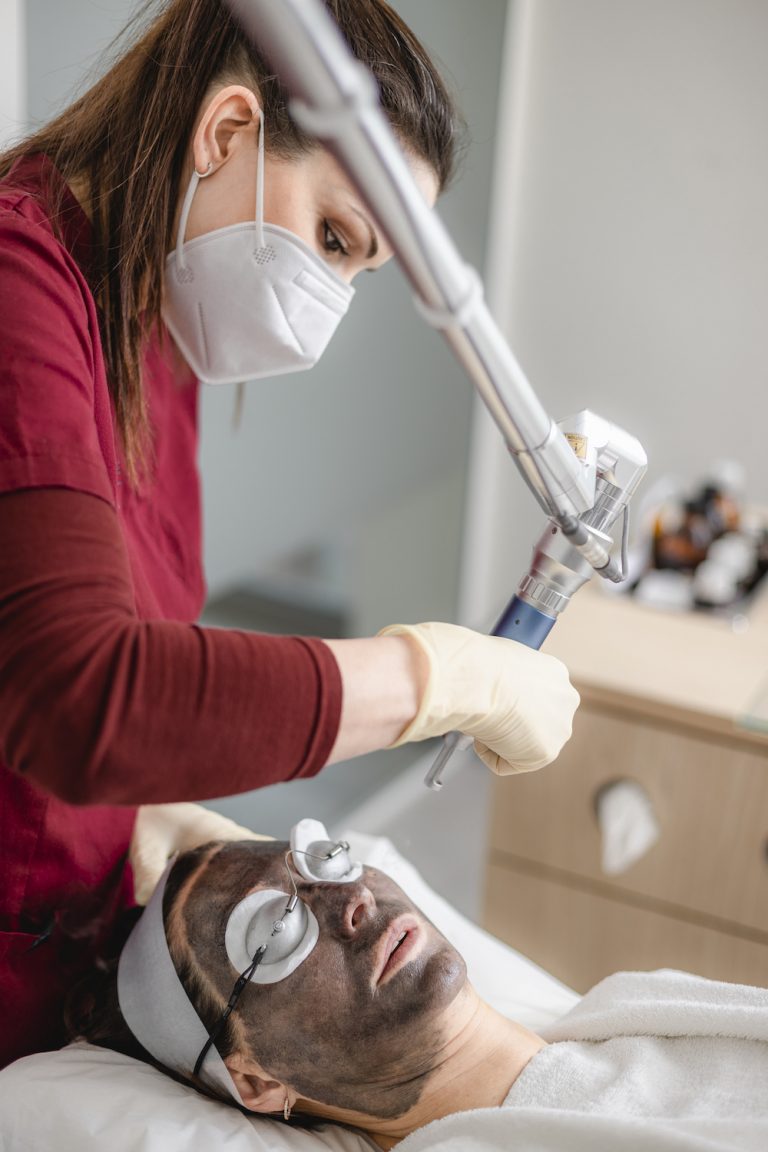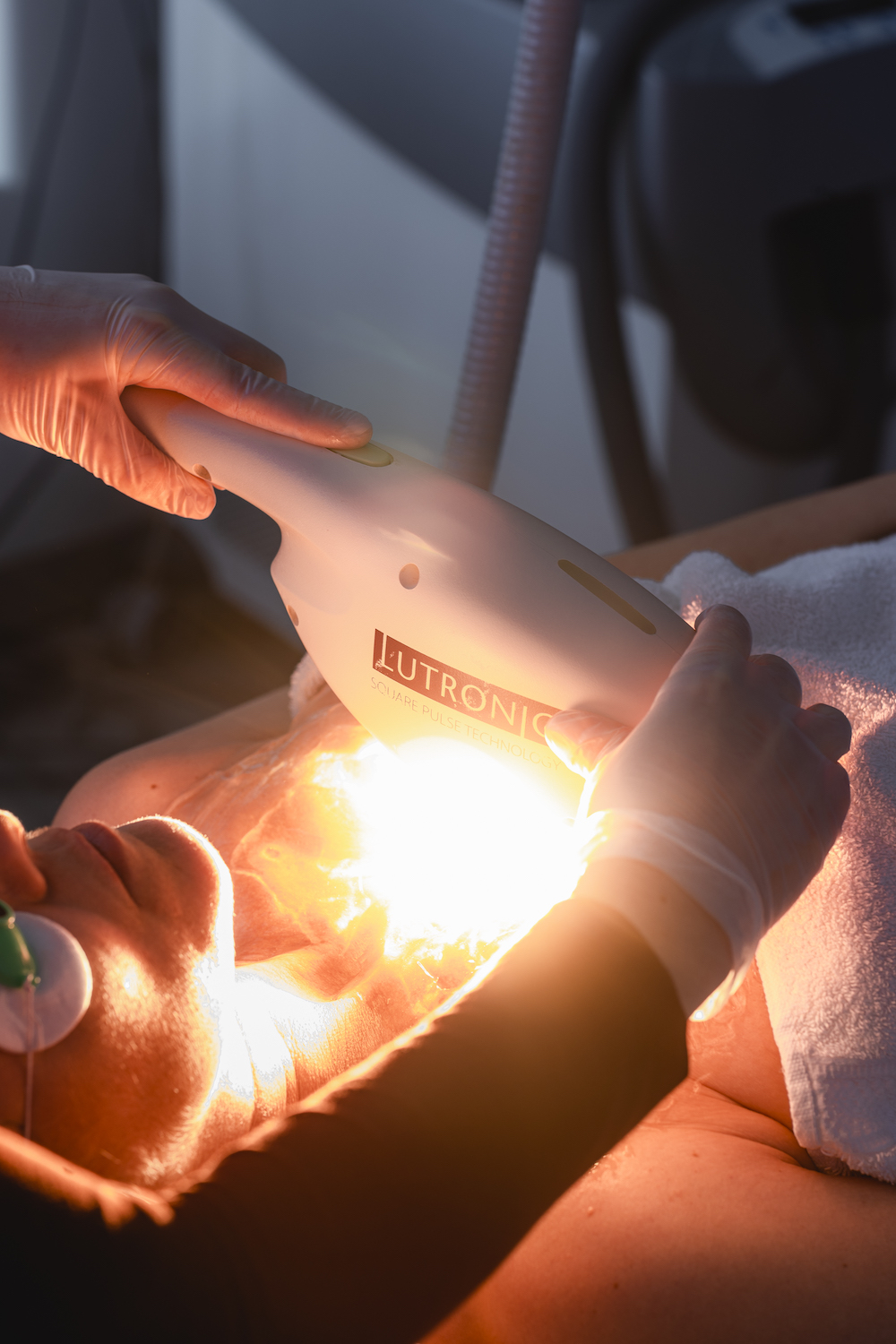
From pigmentation
Marilyn Monroe and Madonna drew one on their cheek, Cindy Crawford owed (in part) her modeling career to it. For a long time, pigment spots were the stuff of it. A tache de beauté, it was called for a reason. But when they start to congregate in groups, we suddenly find them a lot less charming. In this case, we prefer to speak of pigmentation. Small spots that make the skin look darker in certain areas. How exactly do they come about? There are many explanations for this. Genes play a role, as does your age, lifestyle and/or the sun. There are hormonal pigmentation spots – you usually see them on the forehead or around the mouth – but just as much discoloration after inflammation or damage to the skin. And all deserve their own approach.
Treatment:
All these different types of pigmentation come with a specific treatment method. Age spots, pigmentation from sun damage or due to inflammation or damage to the skin are often superficial and easy to treat with a photofacial. Using IPL (intense pulsed light), the spot is flashed away, as it were. Prefer to start slowly? The carbon peel allows us to work very gently on incipient pigmentation spots. However, there are other forms of hyperpigmentation that are deeper. After extreme sun exposure or hormonal changes – for example, pregnancy, hence the nickname pregnancy mask – the pigment cell itself may become overactive, this is also called melasma. In this case, a combination of lasers, peels, soothing products and depigmenting creams is often needed.

Free intake
Wondering what we can do for you? Then make an appointment now for a no-obligation (and free) facial analysis. During this intake, our skin specialists will map out your skin and discuss the best way to address your pigmentation for flawless results.
Frequently asked questions: Fotofacial
It is important to note that IPL primarily reacts to pigmentation. That is, the treatment works best on a light skin tone. It also means that your skin should therefore not be too tanned from the sun, tanning bed or even self-tanner. Are you unsure of your eligibility? If so, be sure to schedule a consultation: this way, we can see together what is possible and possibly schedule a further appointment.
For optimal results, it is important to avoid the sun (and by extension the tanning bed) for 14 days as much as possible. After treatment, the skin is very sensitive and red, making it more sensitive to UV rays and hyperpigmentation. Apply a high sunscreen (SPF 50+) every time you go outside and wear protective clothing such as a cap, hat or sunglasses.
You can, but be aware that the skin may be red and slightly swollen after the treatment. Because the pigment is pushed to the surface, spots will also just darken in the first few days and only then flake off.
– Stay out of the sun for 14 days after treatment and wear a high sunscreen (SPF 50+). This is how you prevent new pigmentation spots.
– Also, do not use scrubs or exfoliators during this period.
– Ignore irritating creams or serums for 14 days.
– Stay away from the scabs as much as possible: don’t pick and don’t scratch! The scabs after the treatment disappear on their own and do not leave scars. The only scarring that can occur is caused by scratching.
– Apply a daily soothing, antiseptic cream that you will be given to take home after your treatment.
Although our bodies are constantly exposed to sunlight throughout our lives, we don’t see the effects until later in life. It’s no coincidence that sun spots – also known as age spots – are especially common in places that have been in the sun (too much), such as the face, décolleté and hands. Good news: we can treat these spots very easily with IPL. Other brown spots such as melasma or pregnancy mask are more difficult to treat, but not impossible. In that case, be sure to make an appointment for a consultation.
We always work with the Solari IPL lamp from Lutronic. Although an IPL treatment looks like a laser treatment, it is actually flashes of light: by heating the melanin – the skin’s dye – the pigment will be broken down and the dark discoloration will eventually diminish. Good to know: only the spot itself is treated, not the surrounding skin.
What makes IPL so unique is that the light pulses cover a broad spectrum of wavelengths. This is why IPL is so effective at pigmentation spots: the different wavelengths break down excess pigment more effectively than most laser treatments, which use only one (invisible) wavelength. The Solari’s special light will absorb the reddish-brown color of the superficial pigment spots, after which the spot disappears.
After an IPL treatment, blood flow to the skin increases temporarily, so you may notice some redness for 1 to 2 days. Sometimes the skin is slightly swollen locally, this is normal. In principle, you may resume your daily activities immediately after the treatment, although it is important to be careful in the sun. Within a few days you will see dark spots. Don’t panic: this is a sign that the treatment was successful. The spots you see are actually the pigment that has broken down and is being shed outward. This process may take several weeks.
During the treatment you may experience a feeling of warmth. Afterwards, the skin may feel burning for a while. After the treatment, the skin is sufficiently cooled and cared for.
- Jos Smolderenstraat 46B 2000 Antwerp
- Underground parking is provided on Jan Van Hoenacker Street.
- +32 (0)3 304 80 30
- info@carpeclinic.be
-
Monday through Friday:
from 8:30 a.m. to 6:30 p.m.
Please feel free to contact us!


